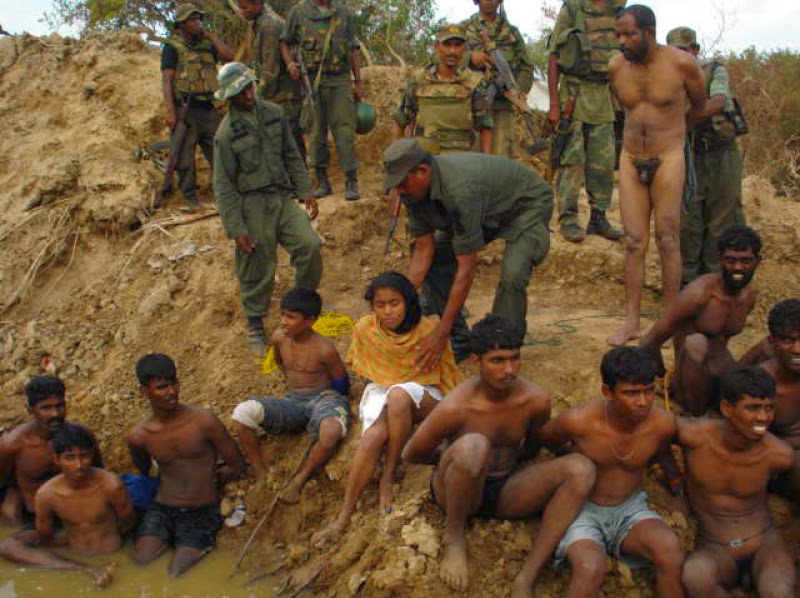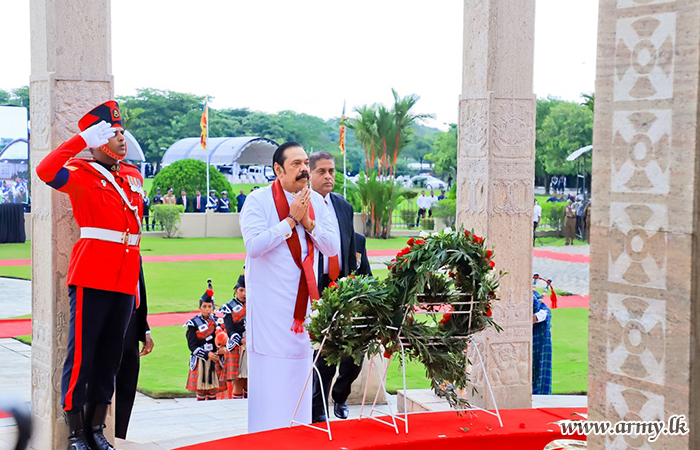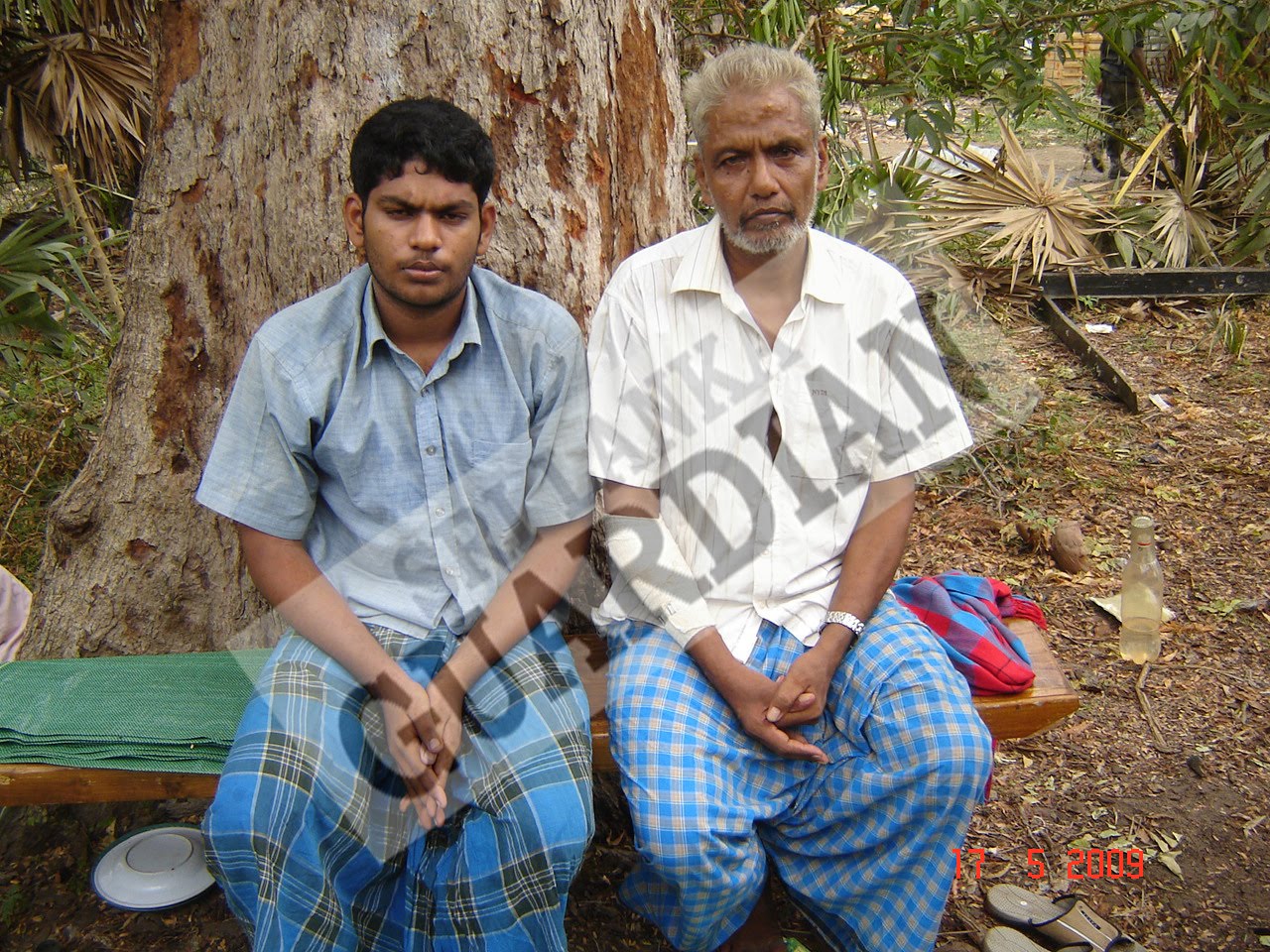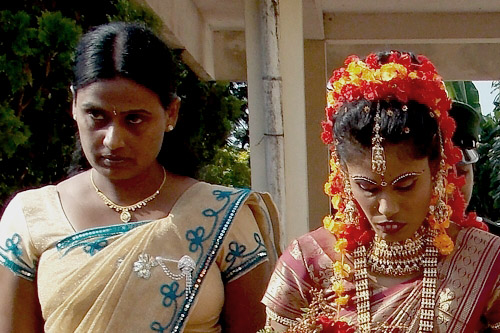1. Overview
In May 2009, the long-standing civil conflict in Sri Lanka reached its culmination with the defeat of the Liberation Tigers of Tamil Eelam (LTTE) by the Sri Lankan government forces. This conflict, which had spanned over 26 years, was marked by a complex web of ethnic tensions, primarily between the majority Sinhalese government and the Tamil minority. The final phase of the war was particularly intense and concluded in the northeastern regions of the country.
A significant event during the last days of the conflict was the surrender of thousands of combatants and civilians. As the Sri Lankan military tightened its grip around the last strongholds of the LTTE, a large number of Tamil fighters along with civilians, who were either part of the conflict or caught in the crossfire, surrendered to the government forces. These surrenders were supposed to mark the beginning of a process of reconciliation and peace, yet they have remained a point of contention and concern. The fate of many who surrendered, amidst chaotic and violent conditions, has been shrouded in uncertainty, with numerous reports of enforced disappearances and extrajudicial killings. This aspect of the conflict’s end has had enduring implications for peace, reconciliation, and human rights in post-war Sri Lanka, continuing to affect the lives of many and the overall stability of the region.
2. Historical Context

Background of the Conflict:
The Sri Lankan Civil War, primarily fought in the Northern and Eastern Provinces of Sri Lanka, was a protracted conflict that lasted from 1983 to 2009. The war was primarily between the Sri Lankan government, which was predominantly Sinhalese, and the Liberation Tigers of Tamil Eelam (LTTE), a militant organization that sought to create an independent Tamil state called Tamil Eelam in the north and east of the island.
The origins of the conflict can be traced back to deep-seated ethnic tensions and grievances among the Tamil minority against state-sponsored discrimination and violence. These grievances were exacerbated by policies that marginalized the Tamil community, including language standardization acts that favored the Sinhalese language and discrepancies in university admissions that disadvantaged Tamil students.
The LTTE, led by Velupillai Prabhakaran, emerged as a formidable guerrilla force, employing suicide bombings, assassinations, and conventional warfare tactics. Over the years, the conflict saw numerous failed peace attempts and continued cycles of violence, profoundly affecting the civilian populations with widespread displacement and loss of life.
Events Leading to Surrender:
The final days of the conflict in early 2009 were marked by intense and decisive military operations by the Sri Lankan Army. The government launched a major offensive aimed at completely eradicating the LTTE. This offensive pushed the LTTE into a small area in the northeast of the country, along with tens of thousands of civilians who were either caught in the crossfire or used as human shields by the LTTE.
As the army closed in, the situation for those trapped in the conflict zone became increasingly dire, with severe shortages of food, medicine, and clean water, coupled with constant bombardment. Reports of heavy civilian casualties began to emerge, drawing international concern and calls for a ceasefire, which were largely ignored by both sides.
The LTTE’s leadership began to collapse under the sustained military assault, leading to the surrender of many combatants. In May 2009, the government declared victory after the deaths of several key LTTE leaders, including Prabhakaran. Thousands of combatants and civilians surrendered in the hope of safety and an end to the fighting, surrendering under the promise of amnesty and rehabilitation. However, the aftermath of these surrenders has been mired in controversy and allegations of human rights abuses, setting the stage for a complex and challenging post-war reconciliation process.
In May 2009, a military spokesman was saying that the majority of the former LTTE fighters would be rehabilitated but that the remaining “self-confessed'” cadres would instead be tried (Reuters 26 May 2009).
The Commissioner General of Rehabilitation Maj. Gen. Jagath Wijetilleke said that nearly 12,000 former LTTE cadres either surrendered or were taken into custody following the end of the war in 2009.
3. Personal Stories
Survivors’ and Victims’ Narratives:
- The broken survivors of Sri Lanka’s civil war, BBC, 11 October 2012>>
- Former LTTE senior cadre Ramesh being questioned after arrest and before disappeared
- Ananthi Sasitharan’s story
Ananthi Sasitharan is a prominent Tamil politician and human rights activist from Sri Lanka. She is well-known for her efforts to seek justice for the enforced disappearance of her husband, Velayutham Sasitharan, also known as “Elilan,” a senior political leader of the Liberation Tigers of Tamil Eelam (LTTE), who disappeared after surrendering to the Sri Lankan military at the end of the civil war in May 2009.
Ananthi Sasitharan has been an outspoken advocate for the rights of the families of the disappeared and has played a significant role in bringing international attention to the issues of enforced disappearances and human rights violations in Sri Lanka. She has also been involved in political activities and has served as a member of the Northern Provincial Council in Sri Lanka. Her work has made her a prominent figure in the ongoing struggle for truth, justice, and accountability in post-war Sri Lanka.
4. Investigative Findings
After the end of the war in Sri Lanka in May 2009, a significant number of individuals who surrendered to the Sri Lankan security forces subsequently disappeared. Various reports and estimates provide different figures:
- ITJP’s (International Truth and Justice Project) Chronology on Numbers regarding 18 May 2009 surrenders
- 2011: Human Rights Watch reported on 20 cases.
- 2011:The LLRC registered 53 LTTE cadres who surrendered during the final days of the war and were alleged to have disappeared.
- 2014: ITJP published a list of 110 names of individuals seen by eyewitnesses “surrendering” to the SLA on or around 18th May
- 2009. This was later increased to 143 names.
- 2018: ITJP publishes website with 280 names.
Various Numbers Cited for Missing/Disappeared in Sri Lanka:
- 1994: Three Commissions in Sri Lanka established 16,800 enforced disappearance cases.
- 2015: Working Group on Enforced or Involuntary Disappearances (WGEID) said it had 5,750 outstanding cases (previously 12,341).
- 2017: 20,000 estimated missing after the war end, say Government estimates.
- 2018: International Committee of the Red Cross (ICRC) has documented over 16,000 individuals as missing since the end of the civil war in 2009. Among these, approximately 5,100 are members of the security forces. These figures include those who have disappeared as a result of being arrested, lost in bombings, or possibly having fled the country (The News International) (Groundviews).
- 2016: The Paranagama Commission is said to have received more than 24,000 complaints.
- 2016: The chairperson of the Office of National Unity and Reconciliation (ONUR) says over 65,000 missing since 1994.
- 2018: Amnesty International says the disappeared number is 100,000.
International Reports:
UN Human Rights Office report released in May 2024 calls on the Government to acknowledge the involvement of State security forces and affiliated paramilitary groups, and to issue a public apology. The report highlights that Sri Lanka’s Government must take meaningful action to determine and disclose the fates and whereabouts of tens of thousands of people who have been subjected to enforced disappearance over the decades and hold those responsible to account.
“This report is yet another reminder that all Sri Lankans who have been subjected to enforced disappearance must never be forgotten,” said UN High Commissioner for Human Rights Volker Türk. “Their families and those who care about them have been waiting for so long. They are entitled to know the truth.”
“The Government owes it to all those who have been forcibly disappeared. It is critical for these crimes to be investigated fully. These crimes haunt not only their loved ones, but entire communities and Sri Lankan society as a whole.”
Despite some positive formal steps by successive governments, such as the ratification of the International Convention for the Protection of All Persons from Enforced Disappearance, the establishment of the Office on Missing Persons and the Office for Reparations, tangible progress on the ground towards comprehensively resolving individual cases has remained limited, the report finds.
The report can be reached from these links:
Government Statements and Actions: As usual, Sri Lanka government outrightly rejected the report of the UN Human Rights Office.
 Meanwhile, The 15th ‘National War Heroes Day’, a commemoration to honour the war heroes, who sacrificed their lives to protect the unity of the motherland, was held under the patronage of Prime Minister Dinesh Gunawardena on 19 May 2024 in front of the National War Memorial at Sri Jayawardenapura Parliament Grounds.
Meanwhile, The 15th ‘National War Heroes Day’, a commemoration to honour the war heroes, who sacrificed their lives to protect the unity of the motherland, was held under the patronage of Prime Minister Dinesh Gunawardena on 19 May 2024 in front of the National War Memorial at Sri Jayawardenapura Parliament Grounds.
UN Human Rights Council has upheld formal steps by successive governments, such as the ratification of the International Convention for the Protection of All Persons from Enforced Disappearance, the establishment of the Office on Missing Persons and the Office for Reparations. However, tangible progress on the ground towards comprehensively resolving individual cases has remained limited, the UN report mentions.
5. Current Status
Issuing a statement on 18 May 2024, the National Peace Council said that “the continued polarization on the issue of memorialization is to be seen in the way in which May 18 is commemorated in the north and east of the country as a day of sorrow, while May 19 is commemorated by the government as Victory Day and promotions are given to members of the security forces. The presence of security forces has been strengthened prior to the commemorations scheduled to take place in the north and east, as it has been ever since the war ended.”
The National Peace Council condemns the arrest and harassment of those who wish to mark May 18 or that week as a period of sorrow owing to the loss of civilian life, which are also Sri Lankan lives whoever they may be, in the last battles of the war. “The path to national reconciliation is not for members of the security forces to drag men and women away at night from their homes and arrest them as happened last week in the east for trying to commemorate their loved ones,” NPC statement says.
On May 12th, four individuals were arrested in the Sampur area of Trincomalee district for allegedly distributing porridge in remembrance of their deceased relatives. The arrests, carried out by the Sampur police, included Kamleswaran Vijitha (40), Kamaleswaran Themila (22), Selva Vinod Kumar Sujani (40), and Navaratna Raja Harihara Kumar (43). Reports indicate that the police forcibly took the individuals from their homes, with media highlighting the harsh treatment of some women during the process.
The police had obtained a court order from the Muttur magistrate court prohibiting the distribution of porridge to prevent commemorations. This incident occurs despite the 2016 recommendation by the Sri Lanka Human Rights Commission to ensure the ‘right to commemorate.’ The police have justified the detentions by referencing the International Convention on Civil and Political Rights (ICCPR), stating an investigation is underway.
On May 16th, the court withdrew the ban on the distribution of porridge but the arrested persons were remanded until May 27 under ICCPR Act.
Secretary-General of Amnesty International Agnes Callamard participated in the 15th anniversary of the ‘genocide at Mullivaikal’, and called on the international community to take decisive action by referring Sri Lanka to the United Nations Security Council with a view to an International Criminal Court investigation.
6. Conclusion
Reflections on Justice and Reconciliation: (video to be embeded)
Section 27 of the Reparations Act states that “collective reparations mean, such measures as are intended to recognize the right to an effective remedy and benefits to the communities or groups of aggrieved persons and shall include(a) means of remembrance of deceased persons, including memorials…”
We urge the government to uphold the law and follow the example set by civil society organizations in commemorating all who lost their lives, expanding these efforts on a national scale.
7. Call to Action
-
“Demand justice for the disappeared! Urge the Sri Lankan government to investigate and bring closure to the families of those who vanished after surrendering in 2009.”
- “Stand with the families of the missing! Call on international organizations to pressure Sri Lanka to account for every disappeared person from the end of the war.”
- “Voice your support for human rights! Advocate for transparent investigations into the enforced disappearances post-2009 and hold perpetrators accountable.”
- “Join the fight for truth and justice! Encourage global leaders to take a stand against impunity in Sri Lanka and support efforts to uncover the fate of the disappeared.”
- “Speak up for the voiceless! Push for the establishment of an independent body to investigate the disappearances and ensure justice for the victims and their families.”

V. Balakumaran, a surrendered LTTE leader, photographed before disappeared. 
Former LTTE Women’s Wing leader Subrmaniam Sivakami aka Thamilini in a wedding in Punthottam, during her rehabilitation period.
